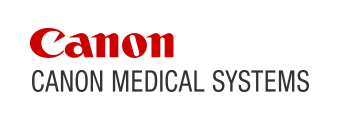Spectral CT Package
Vitrea Spectral CT Package includes spectral applications integrated with the Aquilion ONE / PRISM Edition and Aquilion ONE / INSIGHT Edition. You can easily analyze comprehensive spectral data, including quantification and multi-layered images for a more detailed and definitive diagnosis.
Smartly developed, these applications provide a seamless solution from scan to diagnosis, and are scalable from a single workstation to a hospital-wide network, including PACS integration.
Smartly developed, these applications provide a seamless solution from scan to diagnosis, and are scalable from a single workstation to a hospital-wide network, including PACS integration.
Spectral Analysis
Diagnostically challenging cases can be solved quickly and easily thanks to a fully quantitative spectral toolset that is just a click away.

・Electron Density Analysis
Allows users to generate an Electron Density map and histogram that facilitates the assessment of electron density in any given pixel. Often used in radiotherapy treatment planning to assess tissue heterogeneities and provide accurate dose calculations.
・EffectiveZ Analysis
Allows the user to generate maps and histograms to assess the relative atomic number of a given object, or to confirm the presence of a known material such as iodine.
・Basis Material Bone/Water
Bone/water pair addition introduces another basis material pair for users to review. This basis material allows users to suppress bone or water whilst reviewing imaging.
・Brain analysis
Spectral iodine maps are designed to assist a physician in visualizing iodine concentration and distribution in the brain. It may help a physician differentiate a brain hemorrhage from contrast extravasation or determine the result of a treatment postintervention.
- Support dual-energy brain image with Advanced intelligent Clear-IQ Engine
Allows users to generate an Electron Density map and histogram that facilitates the assessment of electron density in any given pixel. Often used in radiotherapy treatment planning to assess tissue heterogeneities and provide accurate dose calculations.
・EffectiveZ Analysis
Allows the user to generate maps and histograms to assess the relative atomic number of a given object, or to confirm the presence of a known material such as iodine.
・Basis Material Bone/Water
Bone/water pair addition introduces another basis material pair for users to review. This basis material allows users to suppress bone or water whilst reviewing imaging.
・Brain analysis
Spectral iodine maps are designed to assist a physician in visualizing iodine concentration and distribution in the brain. It may help a physician differentiate a brain hemorrhage from contrast extravasation or determine the result of a treatment postintervention.
- Support dual-energy brain image with Advanced intelligent Clear-IQ Engine
Spectral Stone Analysis

The Spectral Stone Analysis application is intended to serve as an adjunct visualization tool for the differentiation between uric acid and non-uric acid stones greater than 3 mm.
Non-contrast spectral acquisitions of potential urinary stones are sent to the application, which then calculates the uric acid content and location of the stone(s) in both 3D and 2D.
The user can segment and analyze up to five calculi simultaneously. Results can be reported directly from Vitrea or the user can export the images to a DICOM® destination for future reporting.
Non-contrast spectral acquisitions of potential urinary stones are sent to the application, which then calculates the uric acid content and location of the stone(s) in both 3D and 2D.
The user can segment and analyze up to five calculi simultaneously. Results can be reported directly from Vitrea or the user can export the images to a DICOM® destination for future reporting.
Spectral Composition Analysis

Non-contrast spectral acquisitions of anatomy with suspected tophi to be performed on the CT system in order to assess the presence of monosodium urate (MSU) crystals.
The images are then exported to the Vitrea system where the software is utilized to evaluate the presence of MSU. If MSU is present, the volume estimate of MSU is calculated and the location of these deposits can be conveniently visualized in the 3D bone or tendon view. In addition, clinicians have the option to report directly from Vitrea or export the images to a DICOM destination.
The images are then exported to the Vitrea system where the software is utilized to evaluate the presence of MSU. If MSU is present, the volume estimate of MSU is calculated and the location of these deposits can be conveniently visualized in the 3D bone or tendon view. In addition, clinicians have the option to report directly from Vitrea or export the images to a DICOM destination.







